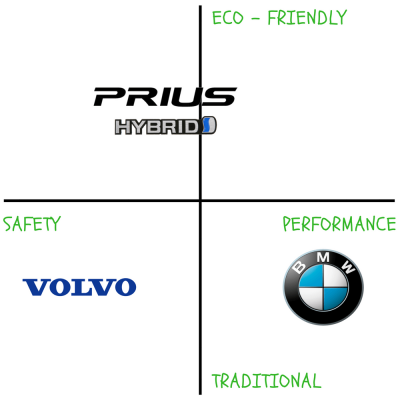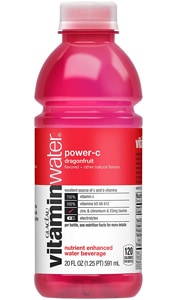
Pat Racco
Founder of Advantage Media

In this relatively short post, we will discuss the critical marketing concepts of positioning, differentiation and value proposition.
When we have a product or service in our hands, it’s a long journey before we reach our clients. And then, once we have reached them, it does not mean they will be ready to buy.
It’s no surprises indeed. We are all buyers; usually, we buy when we are sure of what we want.
Often, after a deep comparison of similar products the market is offering.
First thing first, it is important to keep in mind a broad perspective on marketing.
As you see in the below chart, positioning, differentiation and value proposition only cover 2 of the passages that any business must consider before interfacing to the market.
On the other hand, if you are interested in branding, you can read this post I have written recently Branding and Rebranding.
So, yes, today we talk about positioning, differentiation and the value proposition, but we also keep in mind:
- segmentation and targeting
- the 4ps
- brand
- customers
- the strategic goals of the organisation in the context within which marketing takes place
- the importance of driving revenue and profit
- the ever-present competition
- teamwork and organisation.

Positioning
When we say positioning, we’re talking about determining the distinctive place you want your product or service to occupy in the marketplace, relative to the competition and in the mind of the target customer.
For example, when you see this logo, what comes to mind?
Most likely safety, which for decades was the key positioning of the Volvo brand.
How about this one:

probably something about performance.
And this one?

Maybe a little harder, the Toyota Prius. But probably you came up with some words around “green” or “efficient” or “Earth-friendly”, or something like that.
Marketers use a tool called positioning or perceptual map to show in two dimensions the desired place they like their product or service to occupy in the marketplace relative of the competition and in the minds of the target customer.
The positioning map consists of two axes: vertical and horizontal. It is the job of the marketer to figure out the most important attributes or labels for each axe.
Let’s look at an example for the automobile industry to see the above concept in action. I have labelled the vertical axis eco-friendly at the top and traditional at the bottom the horizontal axis on the left safety and performance on the right.
We can now place the brands on this positioning to show the space they occupy in the market and the mind of the target customer.

In the lower left we have Volvo, in the lower right BMW but where should Prius go?
I struggled a bit with this. I ended up putting it in the middle-left of the horizontal axis and then, of course, toward the eco-friendly label.
This map is a handy tool for positioning discussions.
What about differentiation?
Differentiation is a closely related topic to positioning.
It’s designing your product offering so that it has one or more unique qualities that are:
- valued by your customers
- consistent with your chosen positioning
Marketers, companies, organisations have many tools to differentiate their product.
Indeed, one is the features that you build in into your product or service.
Think about vitamin water. It starts out like water, we suppose, then colour flavour and vitamins are added.

Or think about Starbucks. They differentiate in many essential ways. One of them is training. They devote a lot of energy and time and money to training their employees, so when you go into a Starbucks, you receive excellent service, no matter where you are in the world.
Another way to differentiate is through ‘channel of distribution‘. Are you surprised to see this on the list?
Think about chainsaws, in particular, the Stihl brand of chainsaws.
You can only buy them through authorised Stihl dealers who are specially trained to offer excellent service and support to help you pick the right chainsaw, and they’ll help you figure out how to use it. Furthermore, they provide any after-sale service that you might need.
Finally, of course, you can differentiate through image.
Think about Coca-Cola a pretty obvious example, but it’s remarkable what they have accomplished with their image.
With their visuals, the promises us happiness, a more vibrant life if we buy and drink Coca-Cola.

Quantifying differentiation
But how much differentiation, how much uniqueness do we need in a product or service?
We don’t need to be better in every single category that matters to customers.
In some categories we are going to be at parity, we call these points of parity or PoP.
These are the features of our product or service that approximately match what the competition is offering.
Then we are going to need points of differentiation, one or more critical features of our product or service that give us a clear competitive advantage over the competition.
Indeed, we can certainly beat the competition by giving our customers more, but other situations in which fewer features can be better. Can you think of any?
There have been some best selling books which argue that the answer is yes:
- the book ‘Different: Escaping the Competitive Herd‘ by Youngme Moon
- Blue Ocean Strategy: How to Create Uncontested Market Space and Make Competition Irrelevant by Kim and Mauborgne
- The Innovator’s Dilemma: The Revolutionary Book That Will Change the Way You Do Business by Clayton Christensen
All talk about the importance of finding customers who will value a unique offering which might be simpler and more convenient than what they have been able to get in the past. By the way, I highly recommend all three of these books.
Here’s the idea in action.
Marketers need to look for opportunities to eliminate one or two traditional product attributes while adding new unexpected ones.
One of the examples, Youngme Moon, talks about in her book is IKEA. They removed furniture assembly which is pretty incredible and then added in things like childcare in their stores and even a cafe.

Value Proposition
Our last topic is the value proposition.
A value proposition is a short, compelling statement that articulates for specific benefits a company is offering to its target market.
It is the acid test marketers use to make sure they have something which customers are going to want to buy.
In other words, a value proposition is merely an answer to the question why should the customer buy your product or service.
There are many different ways to create a value proposition. It can be as simple as a list of key benefits.
Another way to approach it is to use a template like this one:
- when our customers buy and use [our product or service]
- instead of [a competitor’s solution]
- than they will receive [what key benefits, not features but benefits]
- because [of the differentiation what unique capability backs up those benefits]
Here’s an example, let’s pick a merino wool t-shirt:
When our customers buy and use our 100% merino wool t-shirt instead of a traditional cotton t-shirt then they will receive warmth comfort and a snug fit because of the insulation and softness provided by 100% merino wool and our unique fitted design.
I have a question for you; what is the value proposition for a key product or service offered by your organisation?
If you’re a full-time student, you can think about the value proposition for one of the programs you’re University offers.
Let’s put it all together
This post is mostly a transcription of a video I have found on Youtube recorded by Brian K. McCarthy. And that’s because I couldn’t find a better and simpler way to write about positioning, differentiation and value proposition.
Certainly, I will cover much more about these topics, but for now, I hope you found this post useful.
So, to recap:
Positioning is determining the distinctive place you want your product to occupy.
Differentiation is designing your product offering so that it has one or more unique qualities valued by the customer.
A value proposition is any answer to the question of why should the customer buy your product.
See you on social media!
Cheers,
Pat
